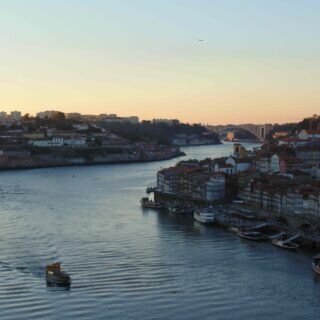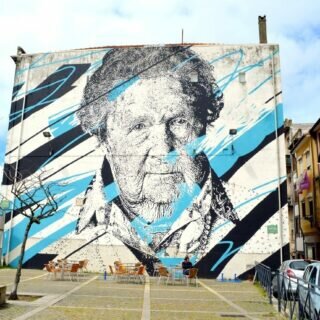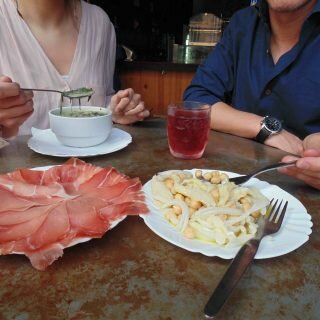Did you know that the city of Porto is bathed by, not one, but three rivers?
We all know the Douro for its immense stream, for its widely renowned wine region paved with a uniquely beautiful landscape, but there are a couple more rivers that had an almost equally important role in city as the Douro itself. However, unlike the latter, these rivers have all but disappeared from the city’s landscape, or better yet they endure beneath the grounds of Porto as they have been ‘covered up’ up by years of successive construction. Let us delve deeper into these long lost rivers and their history with the city and the people of Porto.

The Rio da Vila, a frontier between eras
The Rio da Vila is a most interesting case, both as a geographical and chronological landmark. But before we can get into that, where can we find it after all? It flowed from two different springs: one close to Praça do Marquês, the other from the area of Fontinha, running down through two creeks, through what is today the Avenida dos Aliados and Bolhão, where you can also find one of the city’s most famed food markets. The two of them converged in what is today Praça de Almeida Garrett, the small square that sits just in front of another of Porto’s most well-known landmarks, the beautiful trains station of S. Bento, and from there, the larger stream ran all the way down through the present street of Mouzinho da Silveira into the Douro. Early on in broad 14th Century, the two small creeks from which the upper stream of the Rio da Vila flowed disappeared from the city’s landscape and hundreds of years later, all throughout the 18th and 19th Centuries, the ancient river was finally submerged in its entirety beneath the new streets and buildings that still pave it today. During its earliest days, the Rio da Vila served as the boundary of the 12th Century city of Porto and in the 14th Century, it stood as the frontier between the old and the new city that had emerged towards the Douro, in what today makes up the assortment of housing between the Praça do Infante and the Ribeira. Another interesting thing to note from our city’s toponyms is the name of a street that nowadays intersects the afore mentioned street of Mouzinho da Silveira: the Rua da Ponte Nova, which we can literally translate as the ‘street of the new bridge’, accounting for one particular crossing that connected both margins of this water course. For hundreds of years, the Rio da Vila was used by the local population as an open sewage, highly polluted not just by the houses that surrounded it, but also by several tanneries established in the Street of Pelames, a name that refers to the numerous tanned hides that were part of these shops, and lots of dyeing workshops installed in its banks that dumped their toxic waste into this river.

The Jews and the Rio Frio
The Rio Frio is yet another curious instance. Much like the afore mentioned Rio da Vila, it currently is an underground water course but it used to run over the surface and was as much an important reference as the latter. It sprang from somewhere in the present Rua da Torrinha, flowed towards the area where you now see the Hospital of Santo António and into the Douro. It still maintains the same route, albeit through a system of pipes that replenish a number of fountains and springs in the surrounding area, one of which is located within one of Porto’s most beautiful gardens, the Jardim das Virtudes. But the Rio Frio is closely tied to another crucial piece of our city’s history: Porto’s medieval Jewish community. As we have come to learn, one of Porto’s grandest synagogues was located somewhere in the whereabouts of this river, the Synagogue of Monchique, and there was also something remarkably curious: a Jewish cemetery. Its location was not chosen at random, for the river played a crucial role in the cleansing on the Jews funeral rites. For hundreds of years, right up until their exile from the city and the country in 1496, the Jewish community developed a close relationship with this now forgotten river.

More than just two of our city’s natural landmarks, the Rio da Vila and Rio Frio are pages of Porto’s long and plentiful history, and yet, even though torn away, they’re still as much a part of it as the Clérigos and the Sé.
Learn more about the city with our Porto History Master Class Tour!



